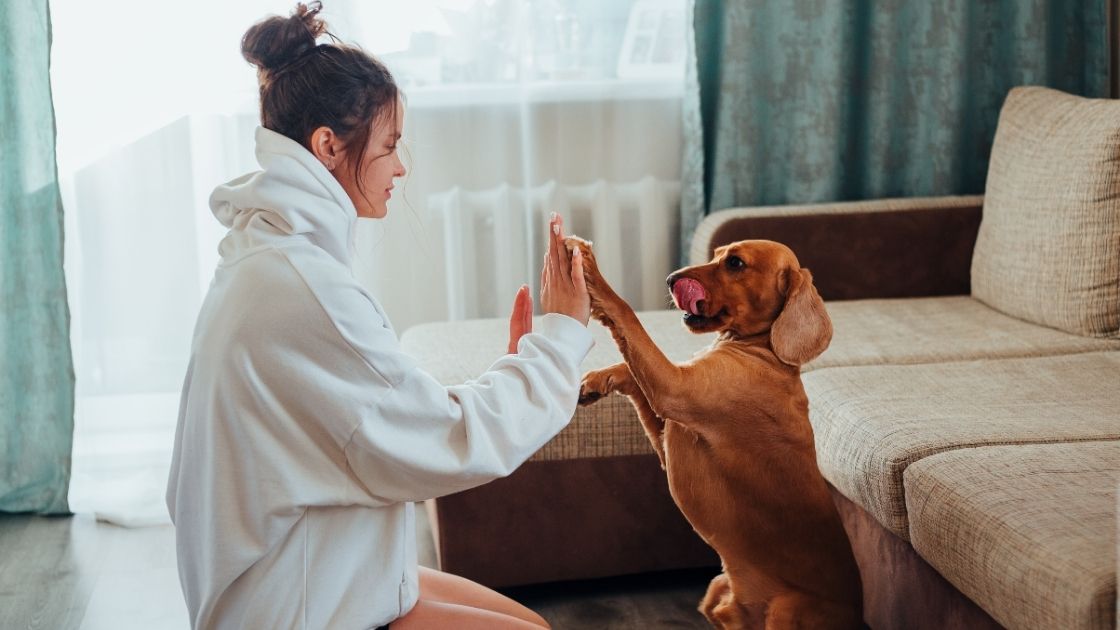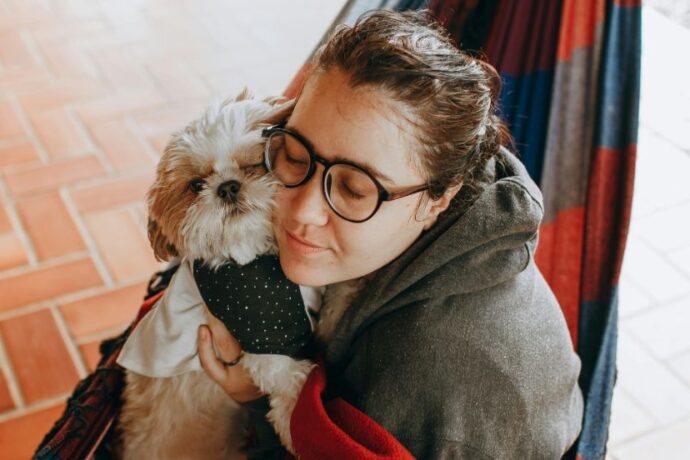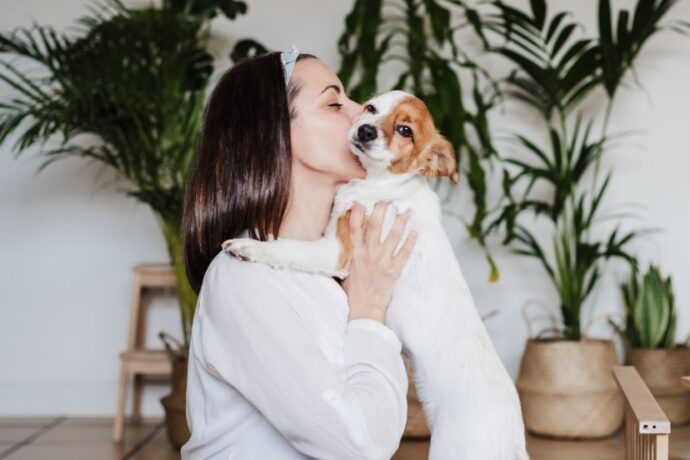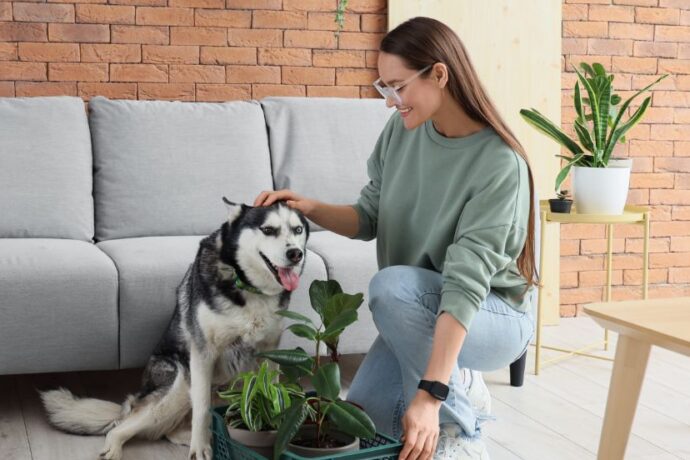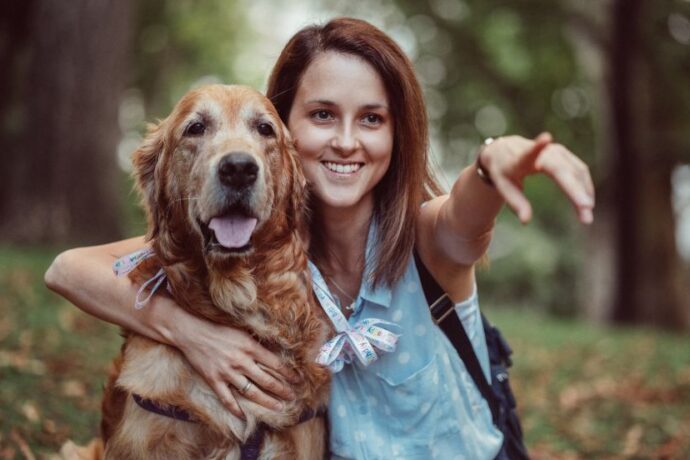Training your dog does not have to be complicated or time-consuming. With the right approach, patience, and consistency, you can teach your furry friend fun and useful tricks in just seven days. According to a study published in the Journal of Veterinary Behavior, short and positive training sessions are more effective than long and intense ones because dogs tend to learn better when training feels like play (1)(2).
In this blog, we will explore 10 easy tricks any dog can learn in a week without needing a professional trainer.
1. Sit – The Gateway Trick
Teaching your dog to sit is often the foundation for all other tricks.
How to Do It: Hold a treat above your dog’s head and move it slightly backward. As your dog’s nose follows the treat, its bottom naturally lowers. Say “Sit” and reward immediately.
Why it works: According to canine behavior experts, the sit is a natural posture for dogs and one of the easiest behaviors for them to learn through positive reinforcement.
2. Paw Shake – The Polite Pupper

This adorable trick turns your dog into a little gentleman or lady.
How to Do It: Ask your dog to sit, then gently lift one paw while saying “Shake.” Praise and reward.
Pro Tip: Most dogs master this in two to three short sessions.
3. Stay – Teaching Patience
Stay is one of the most useful commands for safety and obedience.
How to do it: Ask your dog to sit, hold your palm out, and say “Stay.” Step back slowly and return quickly with a treat if they remain still.
Scientific Insight: Studies show that dogs with strong impulse control perform better in stay-related tasks, proving that this trick sharpens their mental discipline (3).
4. Lie Down – The Relaxation Command
Perfect for calming an excited pup.
How to do it: Start from a sitting position. Hold a treat near their nose and move it toward the floor, guiding them into a lying position. Say “Down” and reward.
5. Spin – A Fun Party Trick
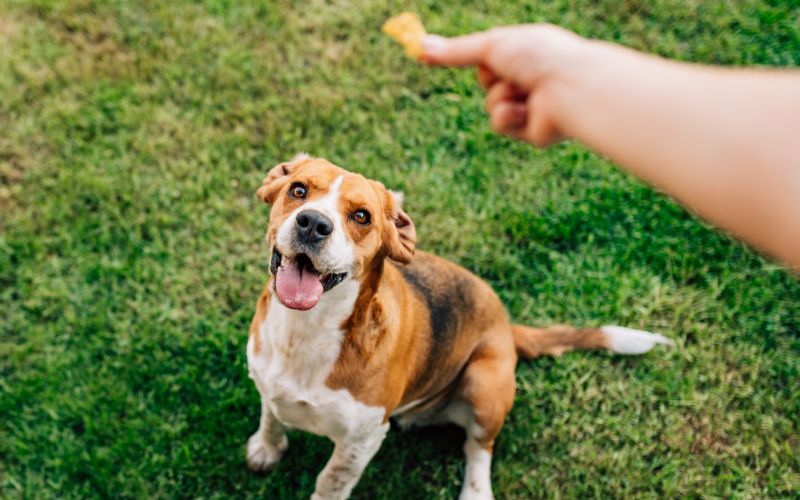
This one is a crowd-pleaser and a great way to improve your dog’s flexibility.
How to do it: Hold a treat near your dog’s nose and slowly move your hand in a circle. Say “Spin” as they follow the motion.
Bonus: This engages their motor skills and boosts spatial awareness.
6. Speak – Controlled Barking
Teaching your dog to speak can help regulate barking rather than increase it.
How to do it: Wait until your dog barks naturally, then say “Speak” and reward immediately. Over time, they will associate the cue with the action.
Expert Tip: A study in Applied Animal Behaviour Science suggests controlled barking training helps reduce random barking episodes (4).
7. Fetch – Every Dog’s Favorite
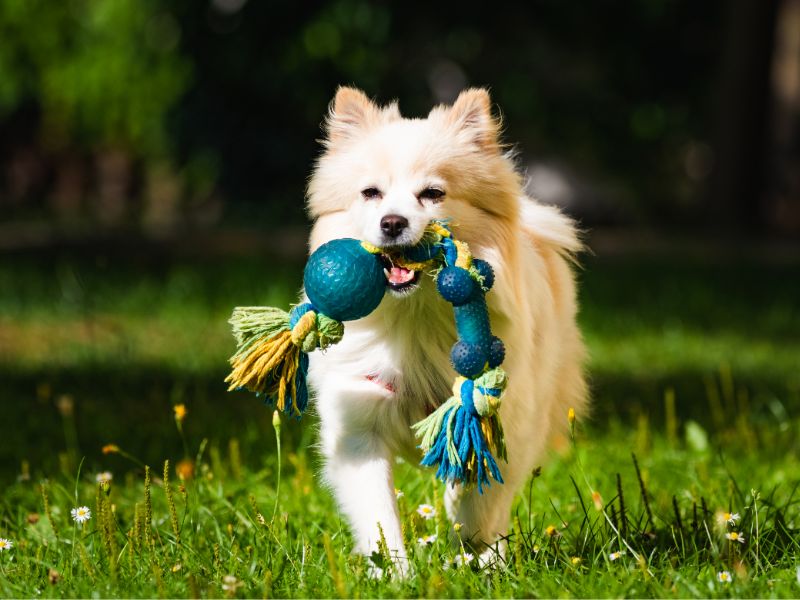
A fun way to combine play and training.
How to do it: Start with a favorite toy, toss it gently, and encourage your dog to bring it back. Reward upon return.
Health Note: Fetch promotes exercise, which vets say helps prevent obesity-related issues in dogs.
8. Leave It – Safety First
An essential trick to keep your dog away from dangerous items.
How to do it: Place a treat in your closed fist and say, “Leave it.” When your dog stops pawing or sniffing, reward with a different treat from your other hand.
Science-backed: Studies show impulse-control training like this reduces food-stealing behaviors (5).
9. High-Five – Social Media Friendly
Similar to the paw shake but with extra flair.
How to do it: Hold a treat above your dog’s head, prompting them to raise a paw. Say “High-five” and meet their paw with your hand.
10. Roll Over – The Showstopper
While it may seem advanced, many dogs learn this quickly with patience.
How to do it: Start from a lying-down position. Use a treat to guide their nose in a circular motion toward their shoulder, prompting them to roll. Reward generously.
Frequently Asked Questions
1Q. How long should each training session last?
Keep sessions short, around five to ten minutes. Dogs learn faster with brief and focused training rather than long and exhausting drills.
2Q. Can older dogs learn new tricks
Absolutely. A study published in Frontiers in Psychology shows that senior dogs are capable of learning at any age. Patience and positive reinforcement are the keys to success.
3Q. Should I use treats for every trick
In the beginning, yes. Over time, replace treats with praise, toys, or affection to maintain motivation without overfeeding.
Conclusion
Training your dog does not require a professional trainer. With consistency, patience, and positive reinforcement, you can teach your dog these ten easy tricks in just a week. These tricks not only improve obedience but also strengthen your bond and keep your dog mentally stimulated.
Remember, every dog learns at its own pace. Celebrate small wins, keep training fun, and enjoy watching your furry friend shine.
References:
1. researchgate – Dog training methods
2. pmc.ncbi.nlm – Does training method matter?
3. sciencedirect – More inattentive dogs benefit from repetitive but not permissive training
4. abc.net – Barking dogs have something to say
5. sciencedirect – Food-related inhibitory control training reduces food liking but not snacking frequency

